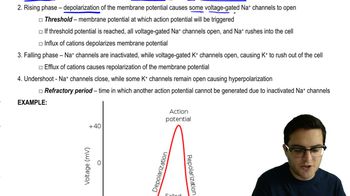Which of the following sensory receptors is incorrectly paired with its category?
a. Hair cell . . . Mechanoreceptor
b. Taste receptor . . . Chemoreceptor
c. Rod . . . Electromagnetic receptor
d. Olfactory receptor . . . Electromagnetic receptor
 Verified step by step guidance
Verified step by step guidance Verified video answer for a similar problem:
Verified video answer for a similar problem:

